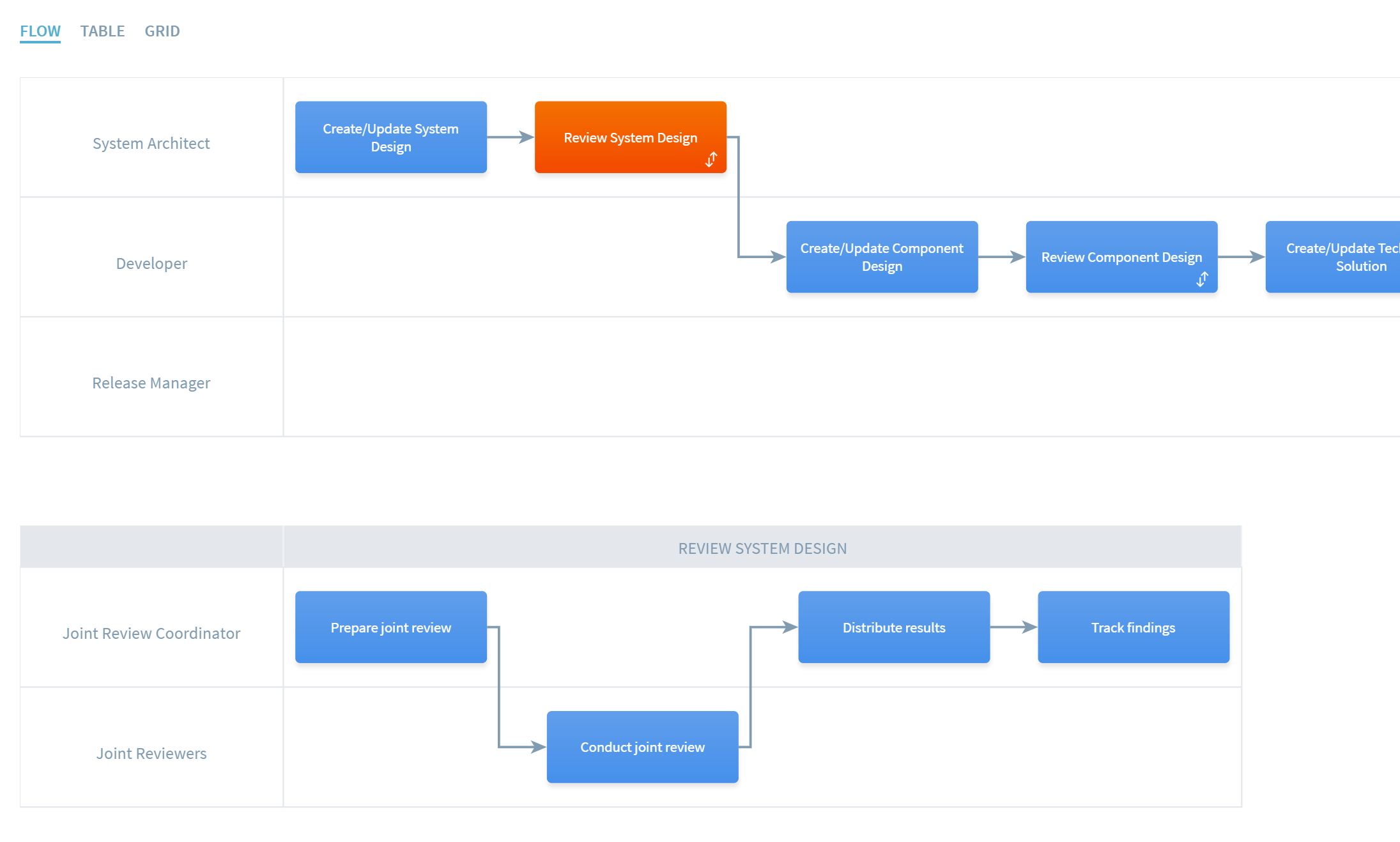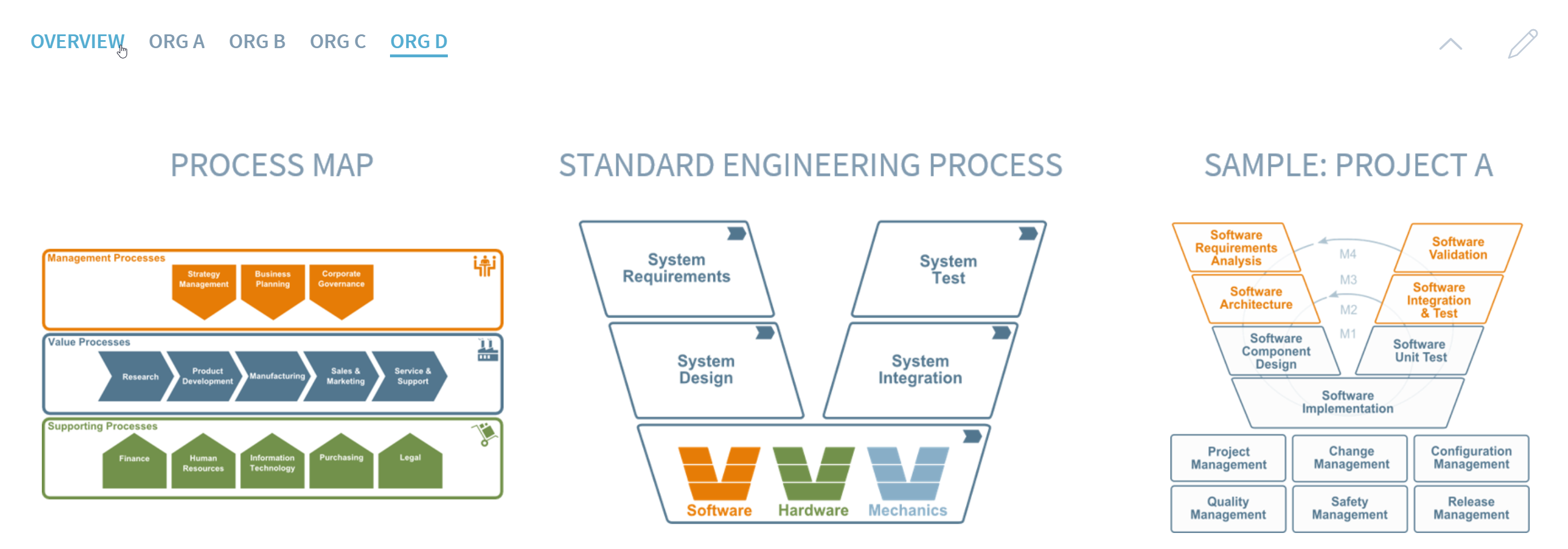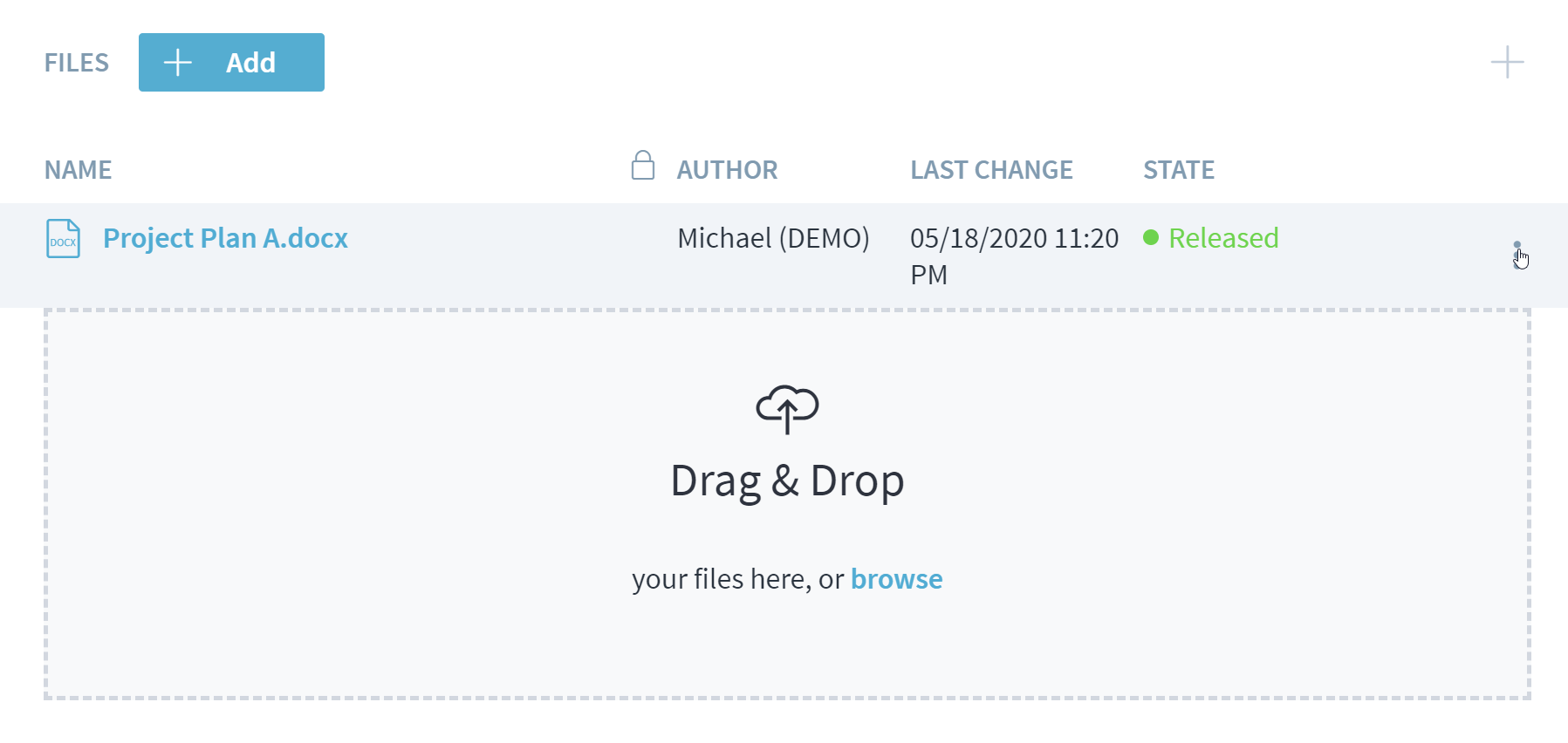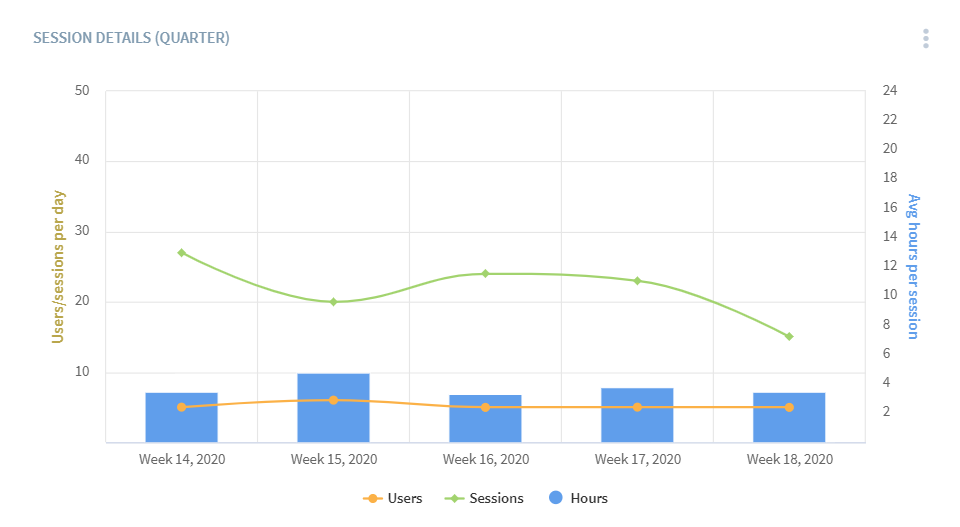This is an old revision of the document!
Release Notes for Stages 7.5
Product development is getting more complex and so are the respective processes. Stages version 7.5 adds new capabilities to provide an even better understanding of complex processes than before.
In addition, the new version contains a set of new features to support large and heterogeneous organizations on a single Stages instance and reduce manual administration efforts for those setups.
Finally, Stages 7.5 adds integrations to PTC Integrity, Redmine, and various other systems.
Scroll and Zoom for Visualizations
One highlight of the new 7.5 release is the new handling of larger process visualizations. Very similar to popular products like Google Maps or Mapquest, users can now zoom into visualizations, use the mouse to scroll the diagrams via “drag and drop”, and snap it to the whole screen size.
Check out the above video to see it in action.
Process Details*
Engineering processes typically contain a lot of activities like “Review and Approve Work Product”, “Baseline Work Product” or “Verify Work Product”. With the new Process Details feature, the review, baseline, or verification process can now be modeled as a separate workflow and associated with the respective activity. When a user views this activity in swimlane view, the detail workflow is directly shown as a second swimlane diagram.
Of course, the detail diagram is also clickable and the user can navigate through the detail process.
The new feature can also generally be used to cross-reference other workflows from across a whole process landscape.
Value Streams*
Product development processes are complex and it is not always easy to quickly see the most important steps among the many processes. The new value streams concept adds a new layer on top of the processes, where modelers can first focus on the high-level steps that create tangible value and the deliverables that capture that value. Deliverables are typically work products that are created by lower-level processes, so they serve as the connection between the two different layers.
Value stream mapping itself has been around for quite some time, especially in manufacturing and supply chain management. With the recent desire to use agile development methods at large scale, it is more and more also used in product, systems, and software development. Please contact us to learn more about how to use it with Stages.
Enhanced Visualizations*
To provide more insight into the process models several visualizations were enhanced.
A new States diagram for work products shows a state chart which contains all states of a work products, the activities performing the state transitions, and the responsible roles for those activities.
The activities in the role diagram can now be grouped by their respective workflow, which is useful if the diagram contains many activities. A new “Phases” switch was added to lay out the activities by phase, which provides more insight into the timing perspective.
The workflow grid diagram can now be grouped by responsible role.
Various other improvements have been made to the standard configuration, e.g. a standard duration attribute for activities, which can be used in the export for project planning.
Support for Multiple Organizations on one Instance
A number of Stages customers use a single server to provide processes for multiple seperate organizations. To better support this case, a number of features have been added in version 7.5.
Multiple Landing Pages
To provide individual landing pages for each organization, the administrator can now configure several of those pages via the new Administration > Landing Pages menu.
All users will then see the different landing pages as tabs directly when they log in.
All users will see their selected landing pages across sessions until they select a different tab.
Role Group Support
TODO
License Pools
Each organization can now have its own pool of licenses. Each pool is configured in a separate license file. Users can then be assigned to one of the configured pools.
To automatically assign users to their respective license pools via SAML attributes, they can now be calculated via JavaScript expressions.
See here for more info.
Integration with PTC Integrity
Stages users can now also access project work products stored in PTC Integrity. The user interface is identical to the work product handling for Sharepoint or SVN, so users do not need to know the details for each system. Also, the user interface is less technical than Integrity itself, so users that do not use Integrity on a daily basis now have a very convenient way to access to functions like download, lock, check-in, or history for the project work products.
The configuration details of the integration with PTC Integrity can be found here.
The new integration also allows checklists and templates to be stored in Integrity instead of Stages itself. See here for the pros and cons of this approach.
Feedback Support
In addition to the existing support for creating process feedback in Jira Server, the following systems can now also be use:
- PTC Integrity Lifecycle Manager
- IBM Rational Team Concert
- Jira Cloud
- Redmine
Please see here for more details how to configure it.
User Analytics
To enable a better understanding of how many users are using Stages and how long they typically use it, version 7.5 adds some more statistics.
Two new graphs show the average number and length of the user sessions and how many individual users have logged into Stages per day. The numbers can be shown for a the last 30 days, three months, or one year. The second chart shows the growth of the overall user base. It is most useful when SAML or LDAP On Demand authentication is being used, because then user accounts are only created upon first login.
In addition, Stages administrators are now able to see the time of the last login and the number of overall logins for every user.
Support for Rich Text Attributes
Besides the description for each element, other attributes can now also contain rich text. This can be used to manage some parts of the description separately, e.g. the applicability of a process or workflow. To configure, use the RICH_TEXT attribute type in the metamodel configuration:
<attributeType ident="applicability" type="RICH_TEXT" searchable="true" />
Rich text attributes are edited with the WYSIWYG editor.
Reporting API Enhancements
To access groups used for access control via the reporting API, the following methods have been added:
stages.getAllUserGroups() returns an array of all user groups.
stages.getAllUsers() returns an array of all users.
A new entity descriptor user.getEntities(“containsUserGroup@SYSTEM”) returns all groups of a specific user and group.getEntities(“containsUserGroup@SYSTEM”) returns all users that are members of a specific group. Every group has a Name attribute.
Support for Latest Oracle and MySQL Versions
Stages 7.5 adds support for Oracle version 19c and MySQL 8.
Please note that you need to download and install new JDBC drivers to connect with these database versions.
Mandatory Manual Actions
The following actions are necessary if you are upgrading from version 7.4 to 7.5:
- The search index folder
…/stages/elasticsearch/data/node/0needs to be deleted. It will be automatically recreated after the restart. - To use Stages with MySQL 8, a new JDBC driver needs to be downloaded, installed, and configured.
See here for full details.
Notes
For topics marked with <font 24px/inherit;;inherit;;inherit>*</font>: please contact your product consultant or the customer care team for more info on how to integrate those enhancements into your configuration.





